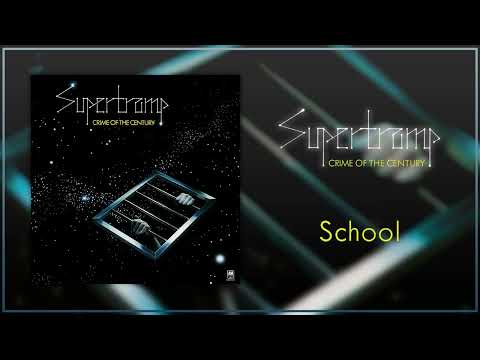If you are just getting started as a guitar player, you have probably noticed that after playing for even a few minutes, your hands begin to become tired and sore. This is common, and it shouldn’t be something that holds you back from becoming a great musician. In order to be able to play without a lot of pain, it is important to exercise your fingers, and not just while you are playing.
In fact, if you only do just a few short minutes of hand exercises before every practice session, you will find that it becomes easier to play for longer periods of time without experiencing a lot of pain in your hands. Today we are going to look at one of the best hand exercises for guitar players that will help guitar players of all levels, from beginner to advanced. Let’s get started.
Why do You Need to do Finger Exercises?
Have you ever looked at some guitarists while they are playing and wondered how they can stretch their fingers so far apart? They are able to do this because they do finger exercises, and they practice, a lot. It doesn’t matter how long you have been playing, there is always going to be that one chord that is difficult for guitar players of all levels to play, such as F major and B flat.
Let’s say you decide to take one hour out of each day for practice, but you find that your hands get sore or cramped after 20 minutes. How do you complete the other 40 minutes without being in a ton of pain? You need to develop the finger muscles, and finger exercises are just what you need for this. Building these muscles will allow you to play comfortably for longer periods of time.
Remember, just like anything else, these exercises aren’t going to make a difference overnight. You have to keep at it and at it. You may not even be able to do all of the exercises at once, and will have to work your way into it over time.
But, the more you do the exercises and practice, the easier they will become. Never push yourself too far. And, if you find that you are experiencing extreme pain, stop what you are doing and contact your doctor, because there may be something else going on in your hands that is causing the pain.
Best Fingering Exercise for Beginners
Whether you have been playing for a few weeks or several years, it is important to warm up before playing so you can play for longer periods of time. It’s kind of like stretching before going jogging. When you do this, you have less risk of injury to your muscles.
Here are some of the best hand exercises for guitar players of all levels.

1-2-3-4 Exercise
One of the best fingering exercises is the 1-2-3-4 exercise, and it is used by guitarists ranging from beginner to advanced. In fact, most great guitar players begin every practice session with this and other fingering exercises. This is a relatively simple hand exercise that can help to reduce a lot of pain in your fingers while you are playing. It goes like this:
- Place your first finger on the high E string, on the first fret, using a down stroke.
- While on the high E, place your second finger on the second fret of the same string, and use an up stroke.
- Now, place your third finger on the third fret and play with a down stroke.
- Last, but not least, place your pinkie finger on the fourth fret and play an up stroke.
- Move on to the B string and do it all over again, and keep following the same progression on that string, and each of the other strings.
The more you practice this exercise, the easier it will be to do. You will find that you are able to play the notes faster and faster with each practice session. This is a great way to stretch out your fingers so you have a longer fret reach, and it is a great warm-up for all of your practice sessions.
Not only will this help you to build strength in your fingers, it will also help you to learn how to use each finger independently from one another. The following are a few tips that will help with this exercise:
- Hold all of your fingers on the appropriate frets as you are playing each note. This is going to help you to develop a better stretch so you have more of a reach between frets. Your fingers will become more limber, and the muscles will become stronger.
- Remember to always use the tips of your fingers rather than laying them flat across the strings. Your fingers should be somewhat rounded to ensure that only the tip touches the strings. This is going to help to improve your guitar-playing technique. It will also toughen the tips of your fingers, making it less painful to play over time. Once your fingers are toughened up, you will be able to stick straight pins into your fingertips and not even feel a thing!
- Don’t worry if your fingers touch the other strings at first. Yes, this will mute the other strings, but as you practice and get better at only using your fingertips, this won’t be a problem at all.
- There is no need to do this exercise for any more than five minutes each day before practice sessions. You don’t want to end up overdoing it and have strain on your fingers when you are trying to achieve just the opposite.
- Keep your posture relaxed. If you have to play in a contorted position, it isn’t going to help to alleviate any pain. Try to keep your hands and body in a relaxed position as much as possible. Remember, you are doing these exercises in order to be comfortable while playing, and not to add discomfort.
Another Hand Exercise to Try
We would like to discuss one more hand exercise that is very similar to the 1-2-3-4 exercise. The biggest difference is, you will be focusing on making your fingers curl towards the palm of your hand. This exercise should be practised very slowly in order for it to really work. This is a great exercise to add to your routine if you are unable to easily reach to play certain chords.
Begin by placing your index finger on the eighth fret of the high E string, while keeping the rest of your fingers on that same string in this order: second finger, ninth fret; third finger, 10th fret; fourth finger, 11th fret. Once you get to the note played by the pinkie finger, move to the next string (A) and start the process all over again.
While doing this exercise, remember to not rest your palm on the fingerboard (but make sure it is as close as possible without touching the fingerboard).
Work at keeping the proper finger positions without scrunching them up, which will lead to cramping. Once you master this exercise, move the first finger back one fret, while keeping the other fingers in the original positions. This is going to help stretch out the space between the first and second fingers.
For an even better hand workout, do this exercise backwards, beginning with the pinkie finger by moving it to the 12th fret.




















